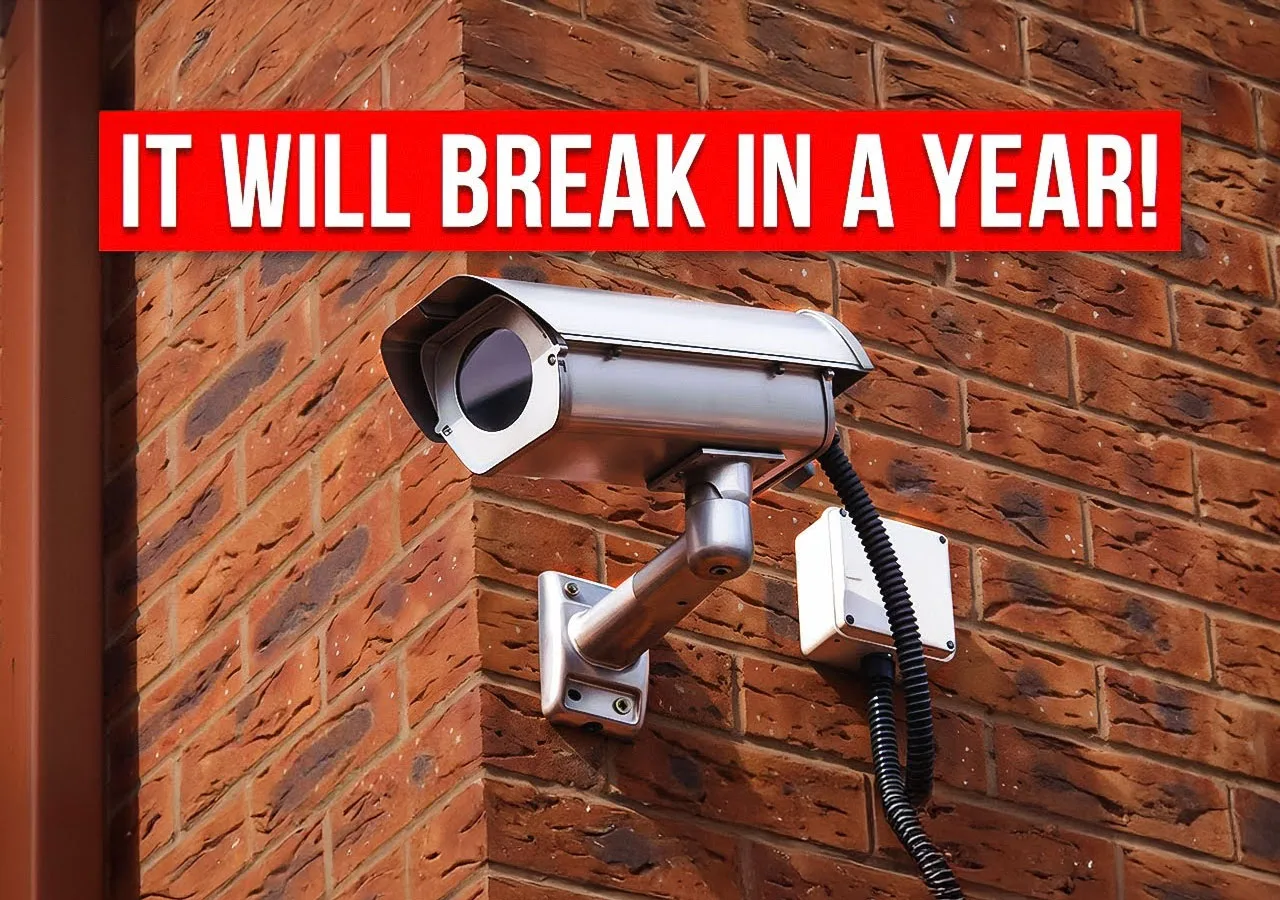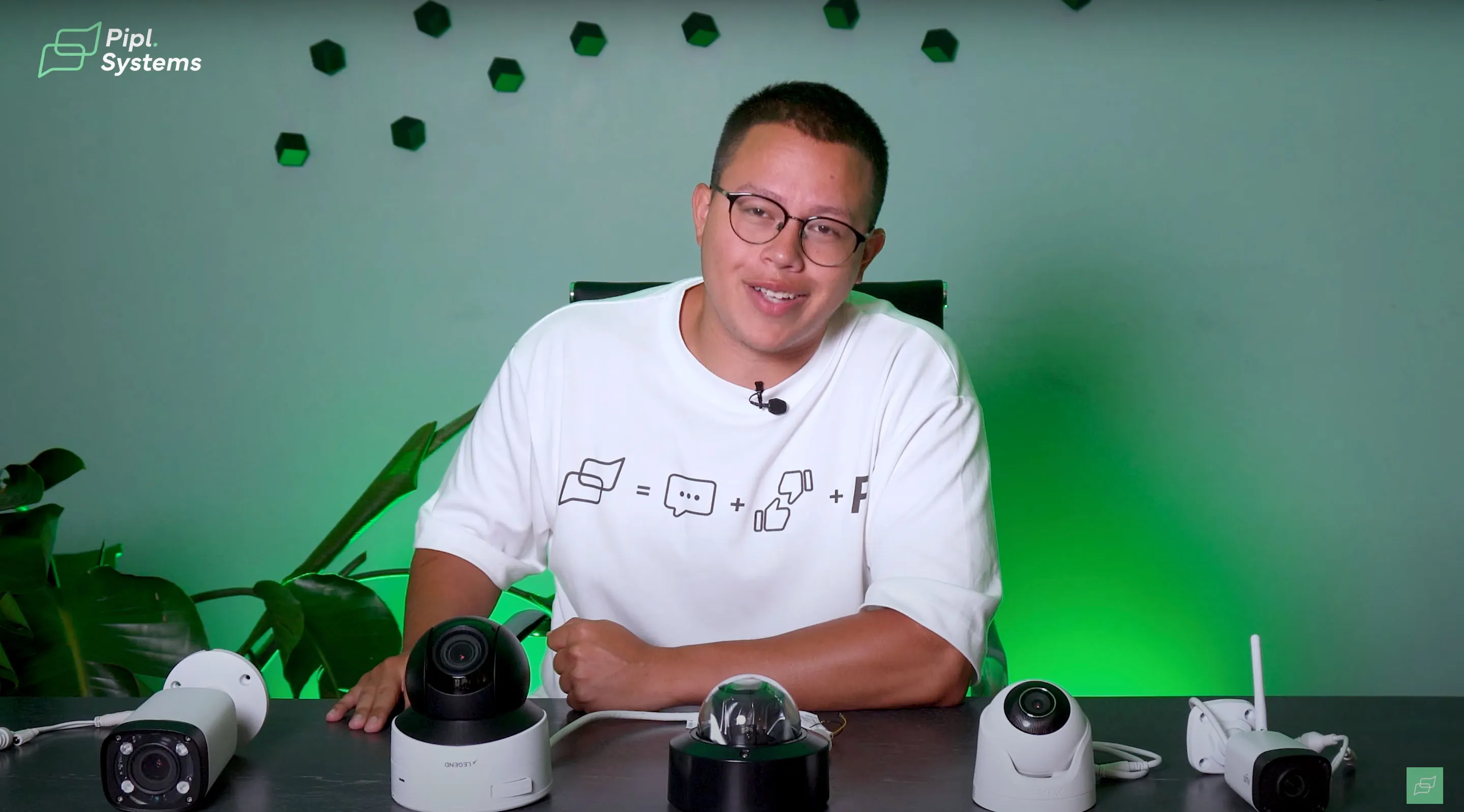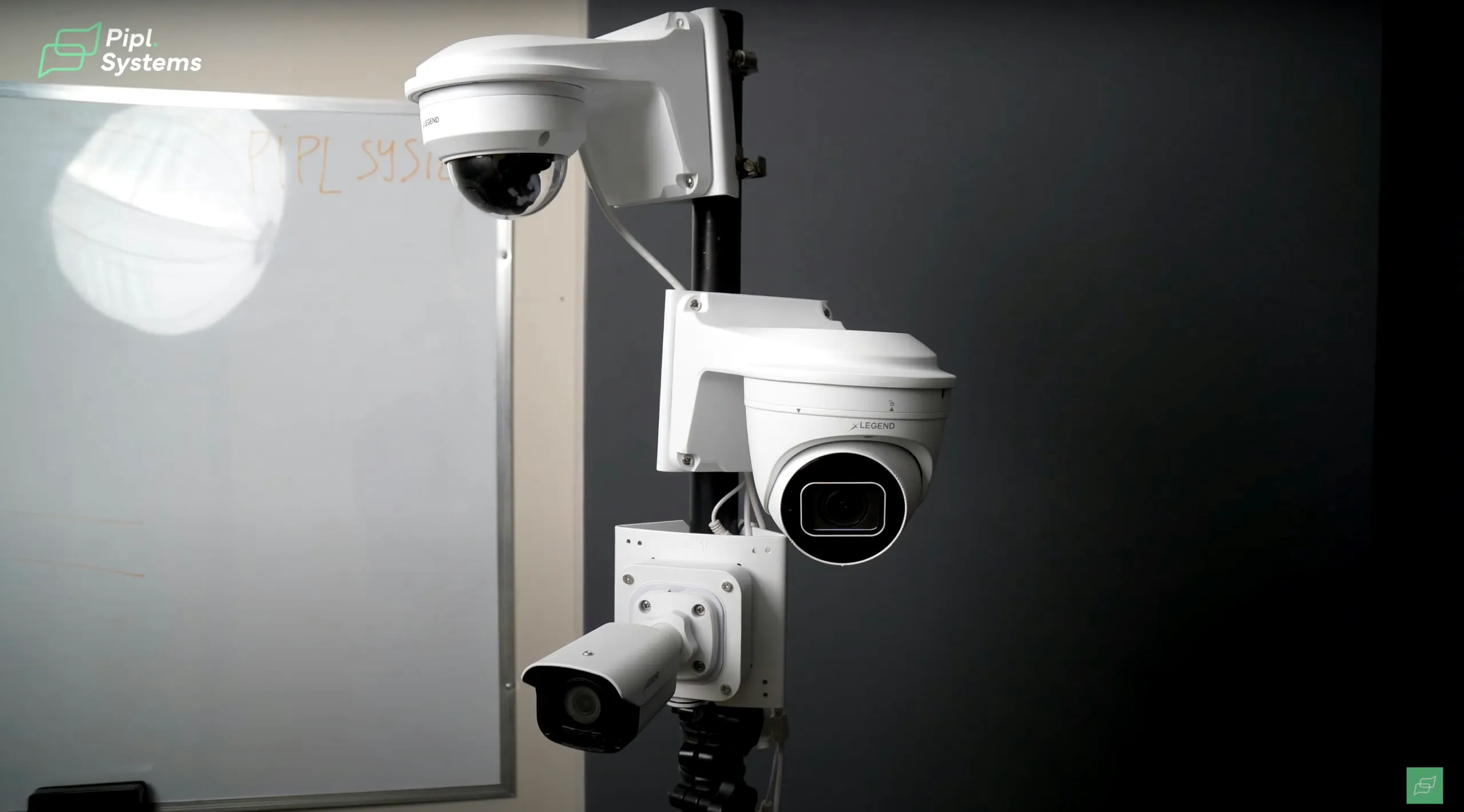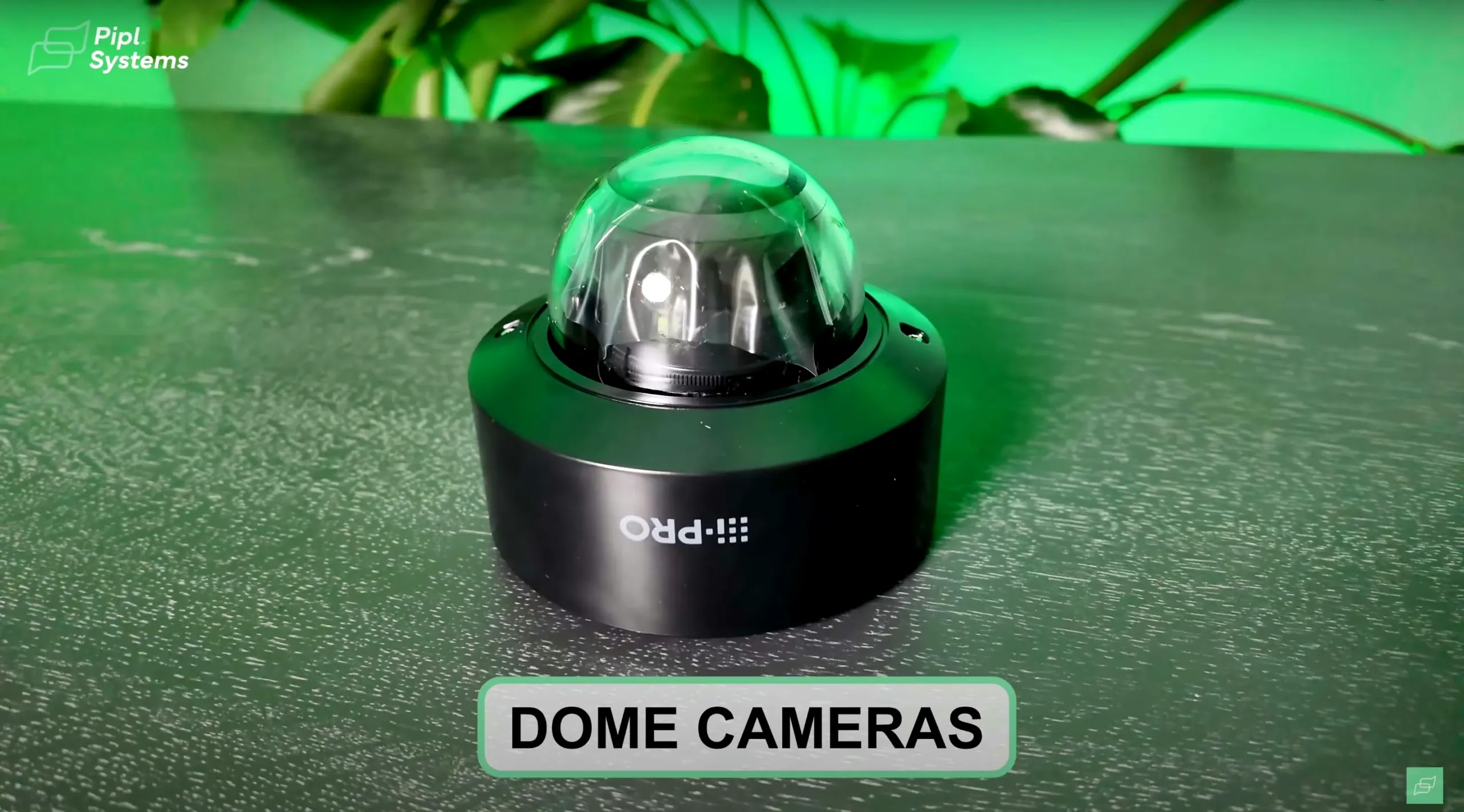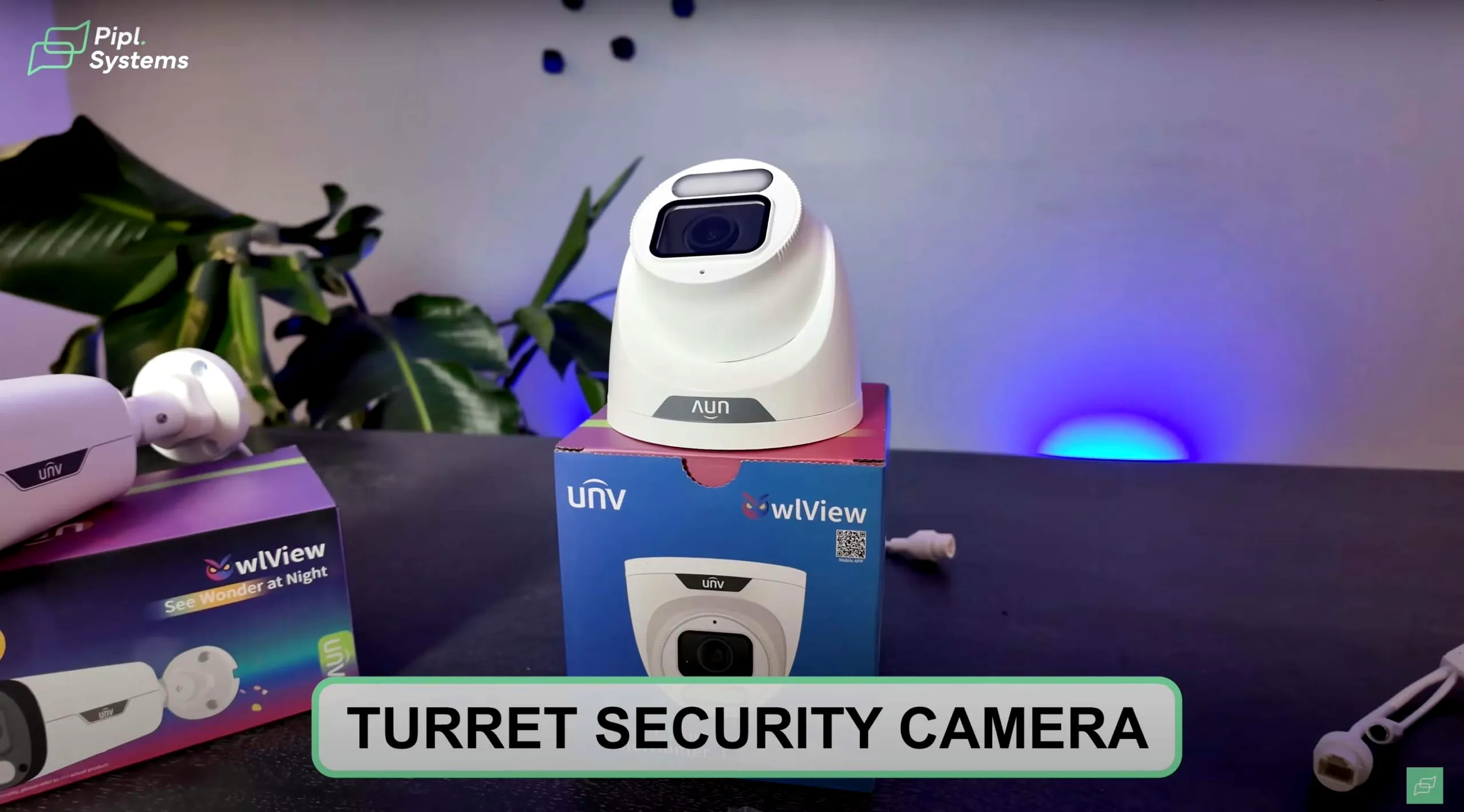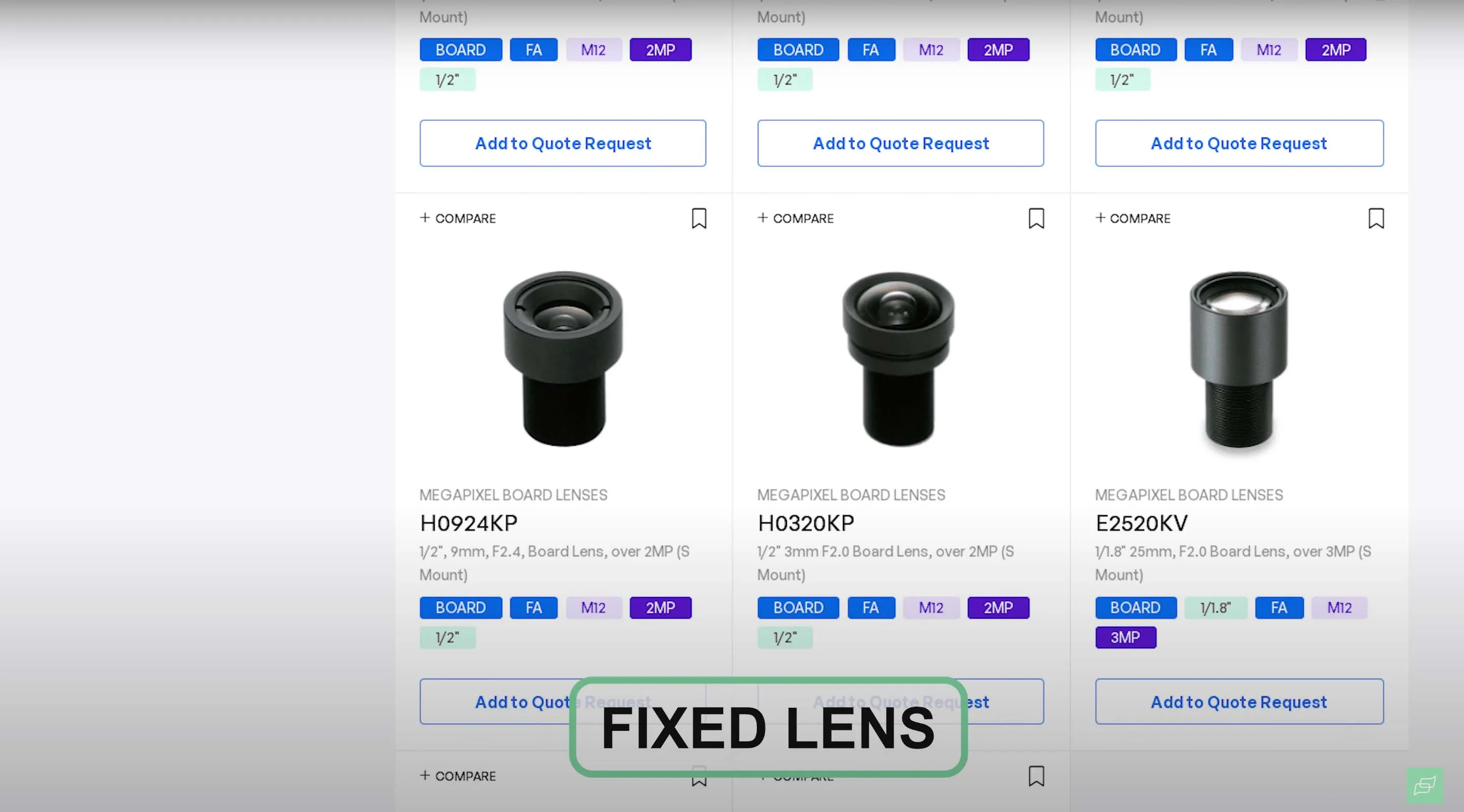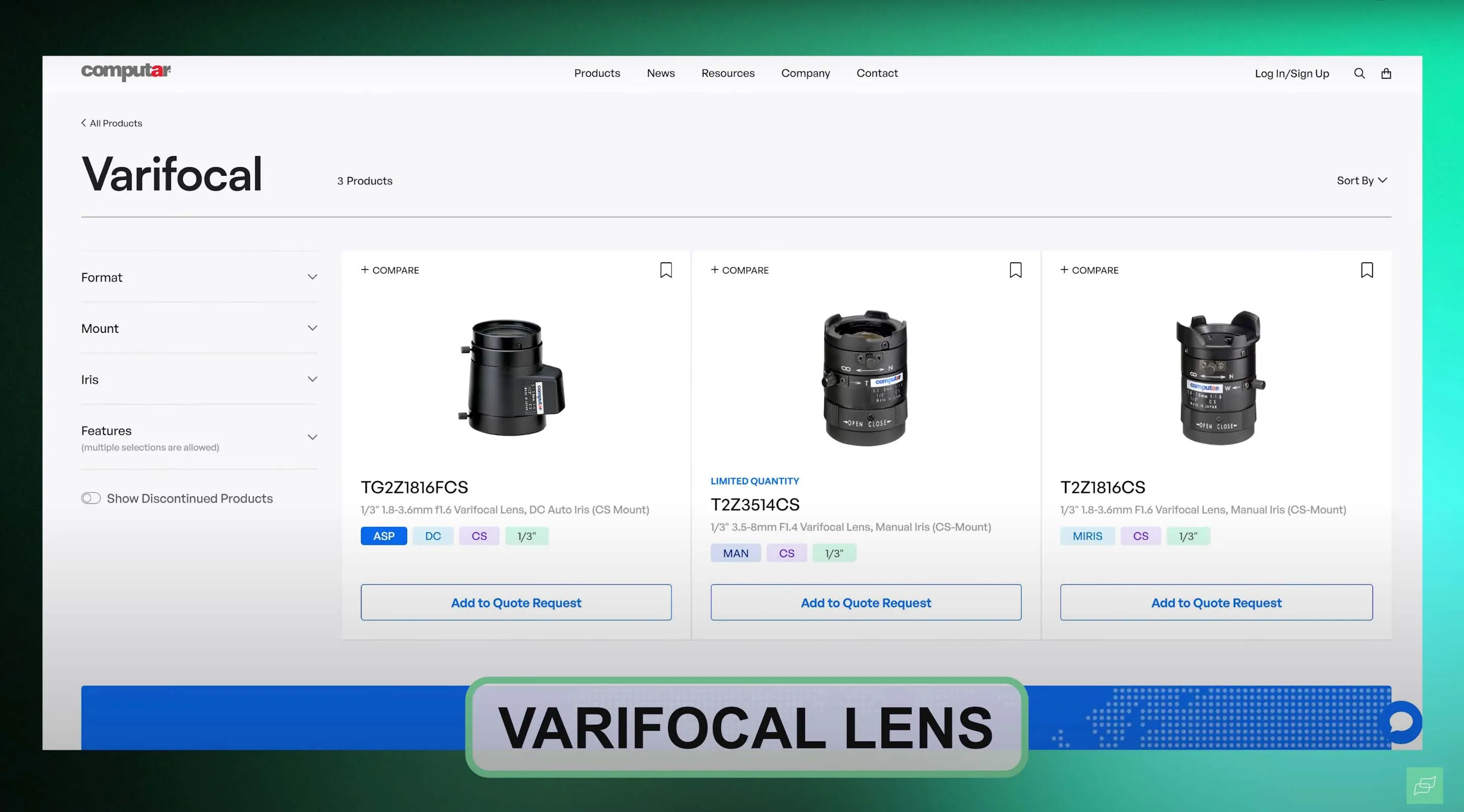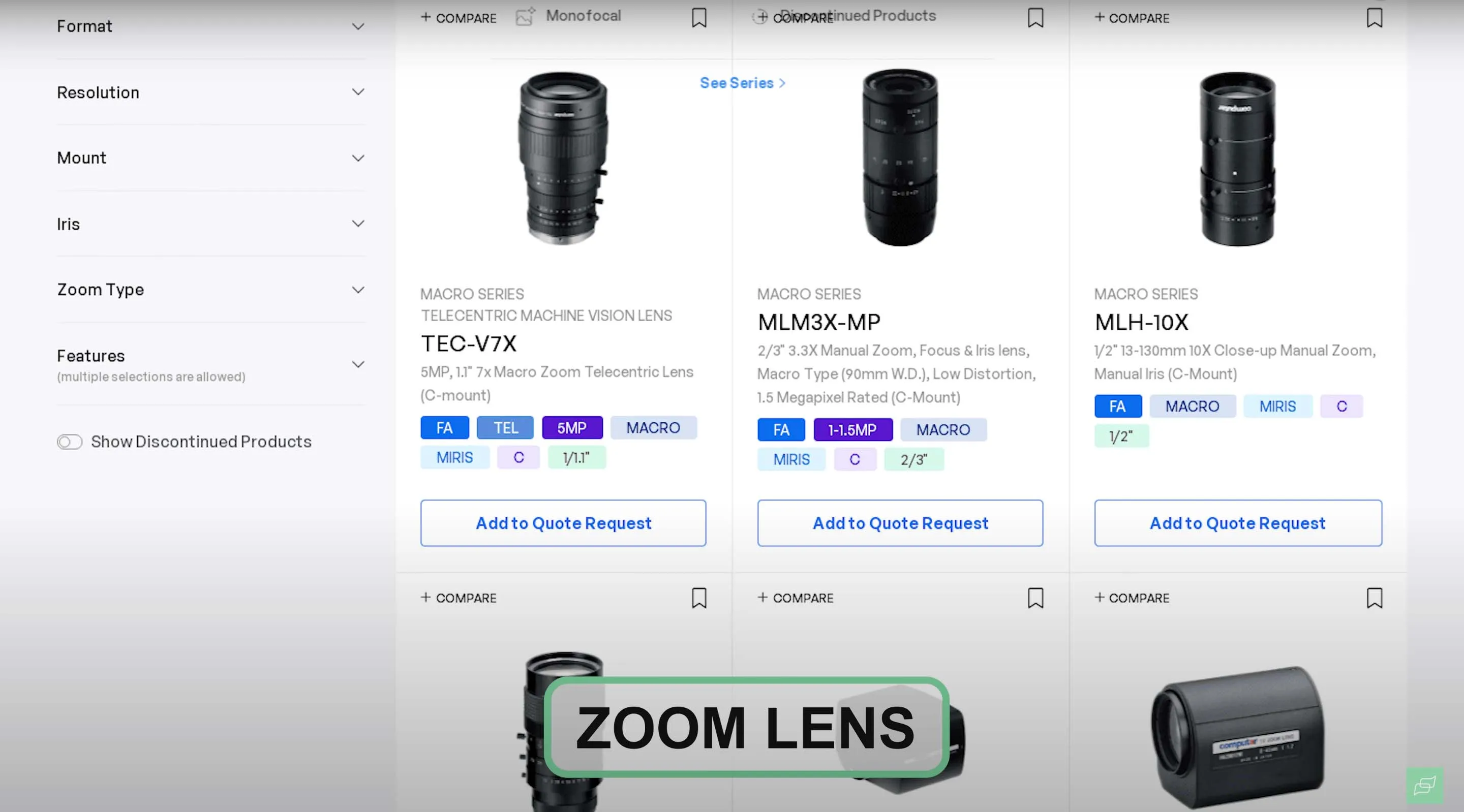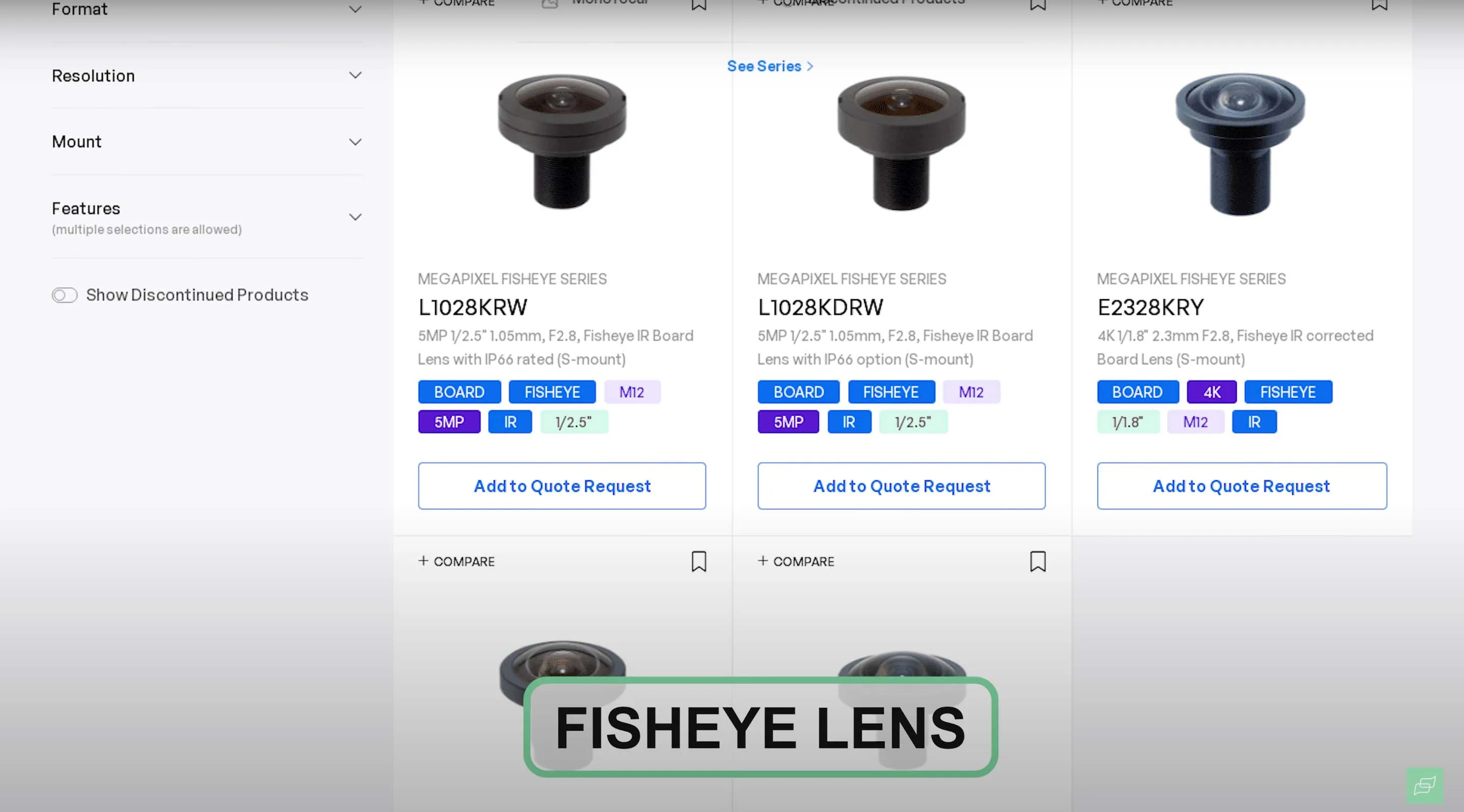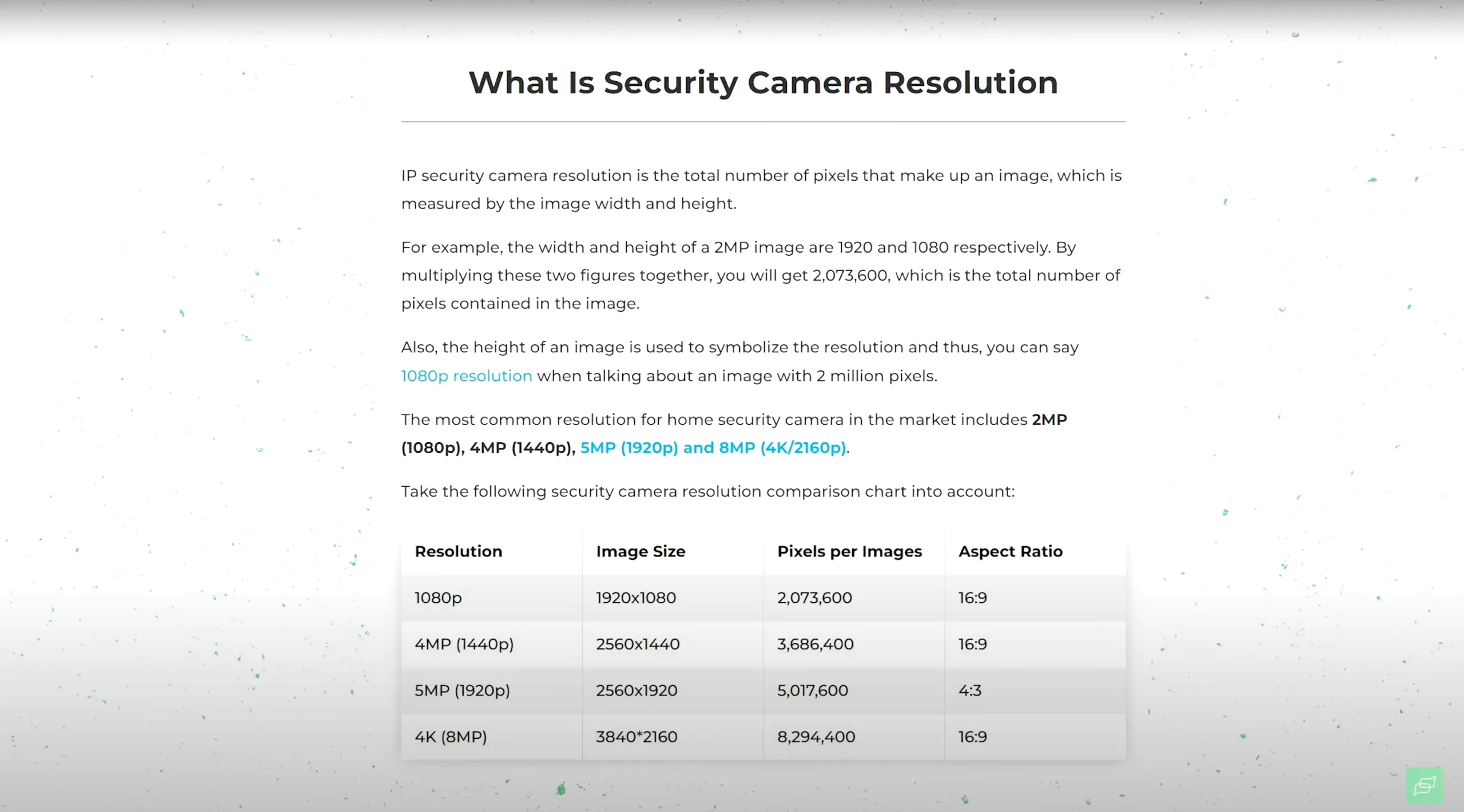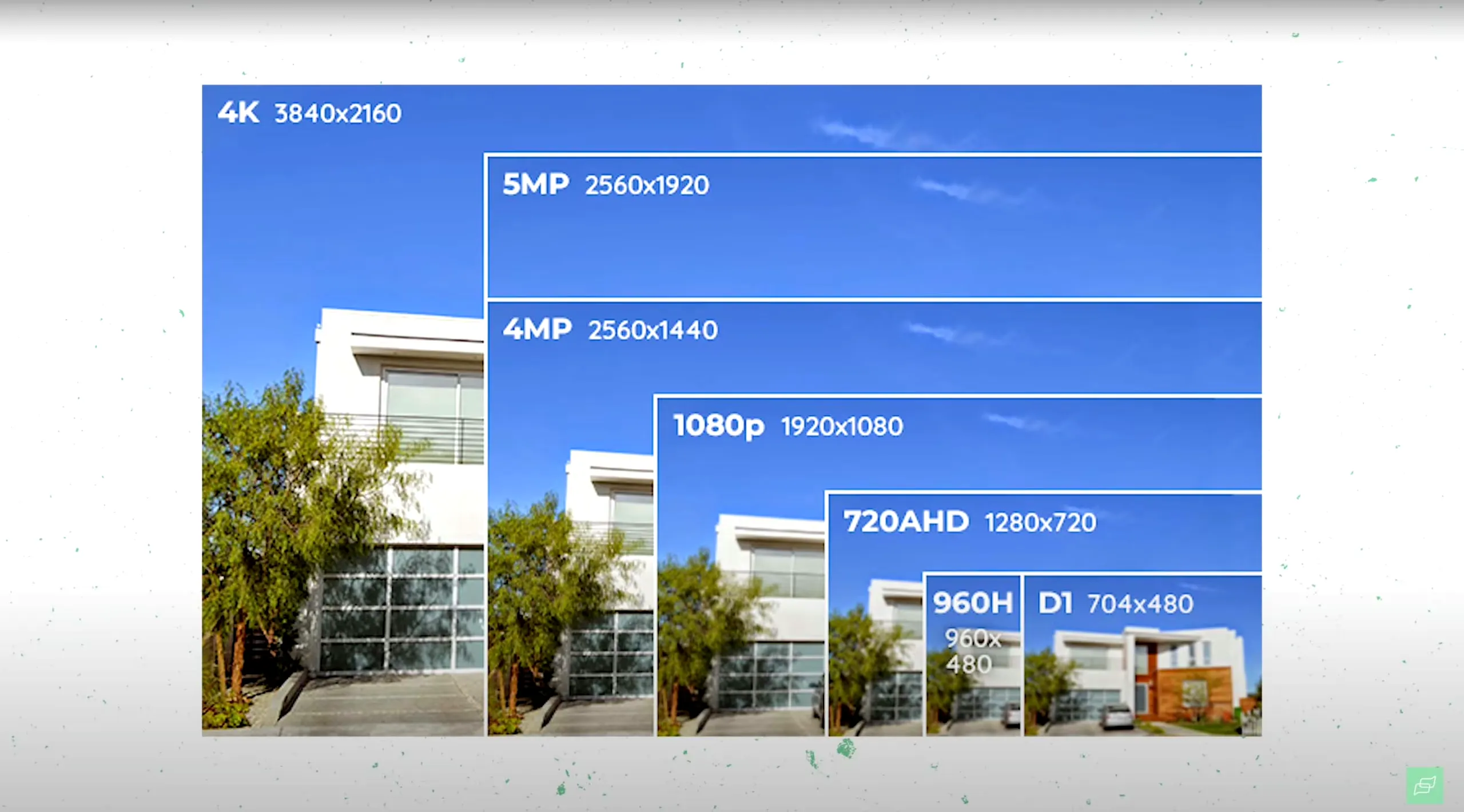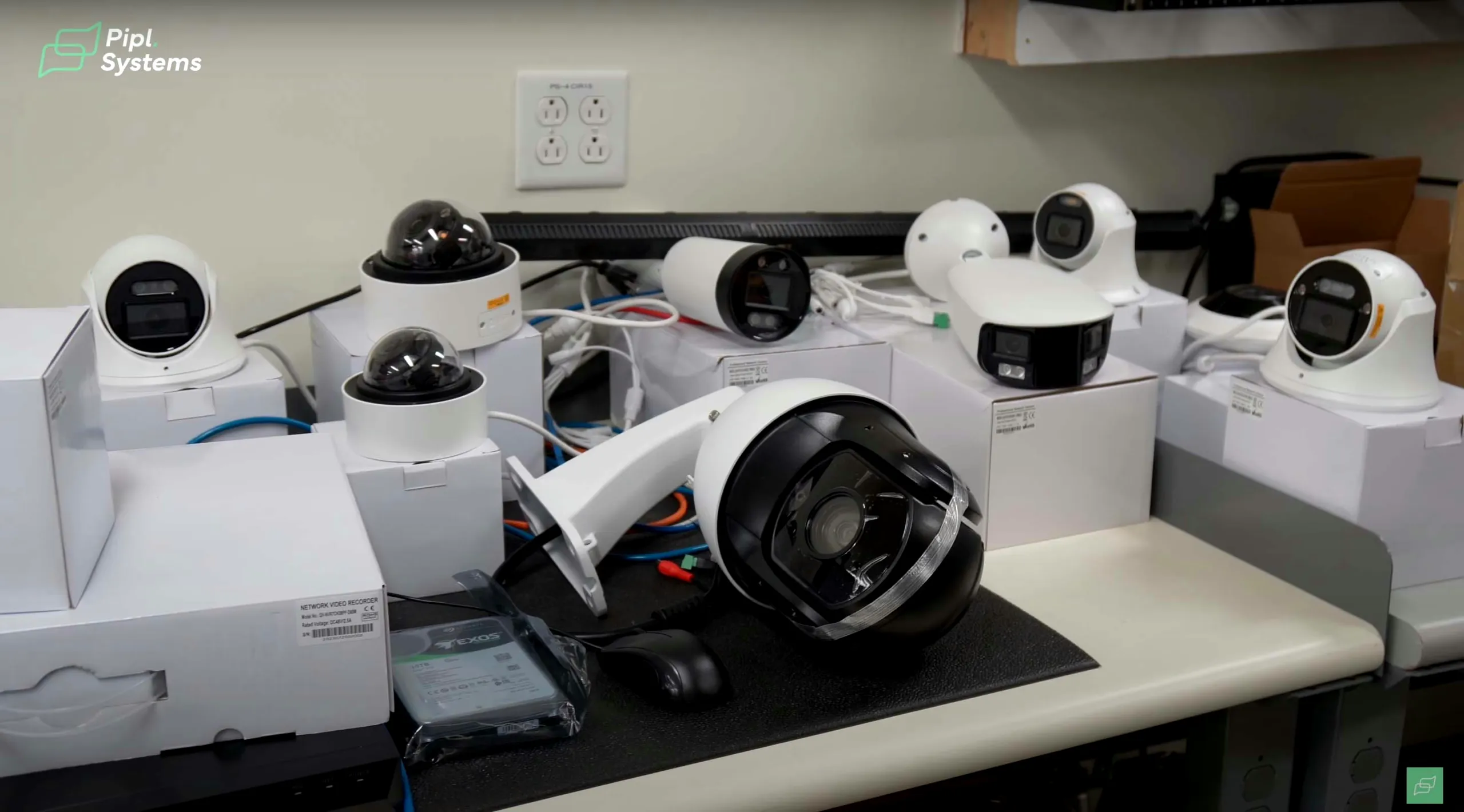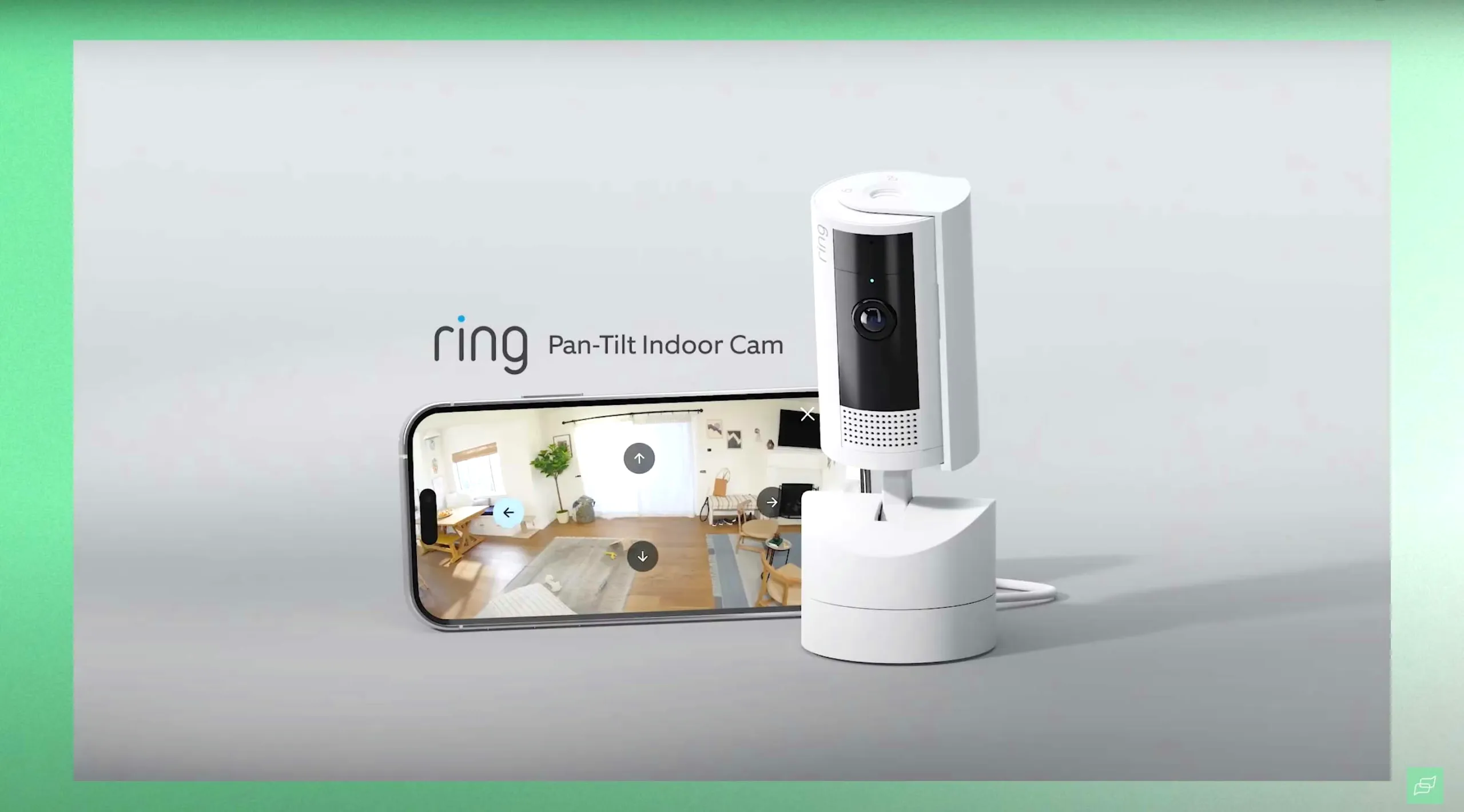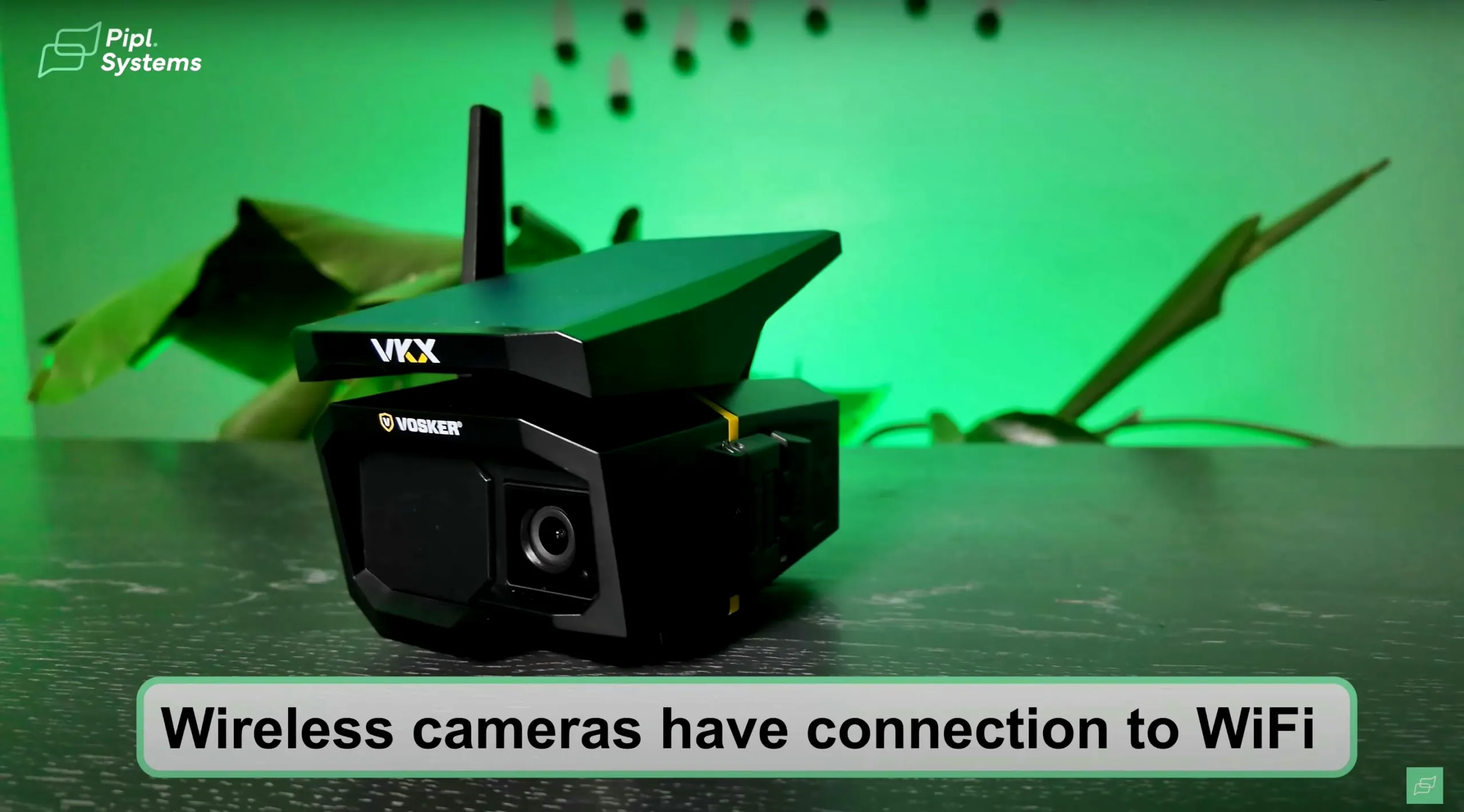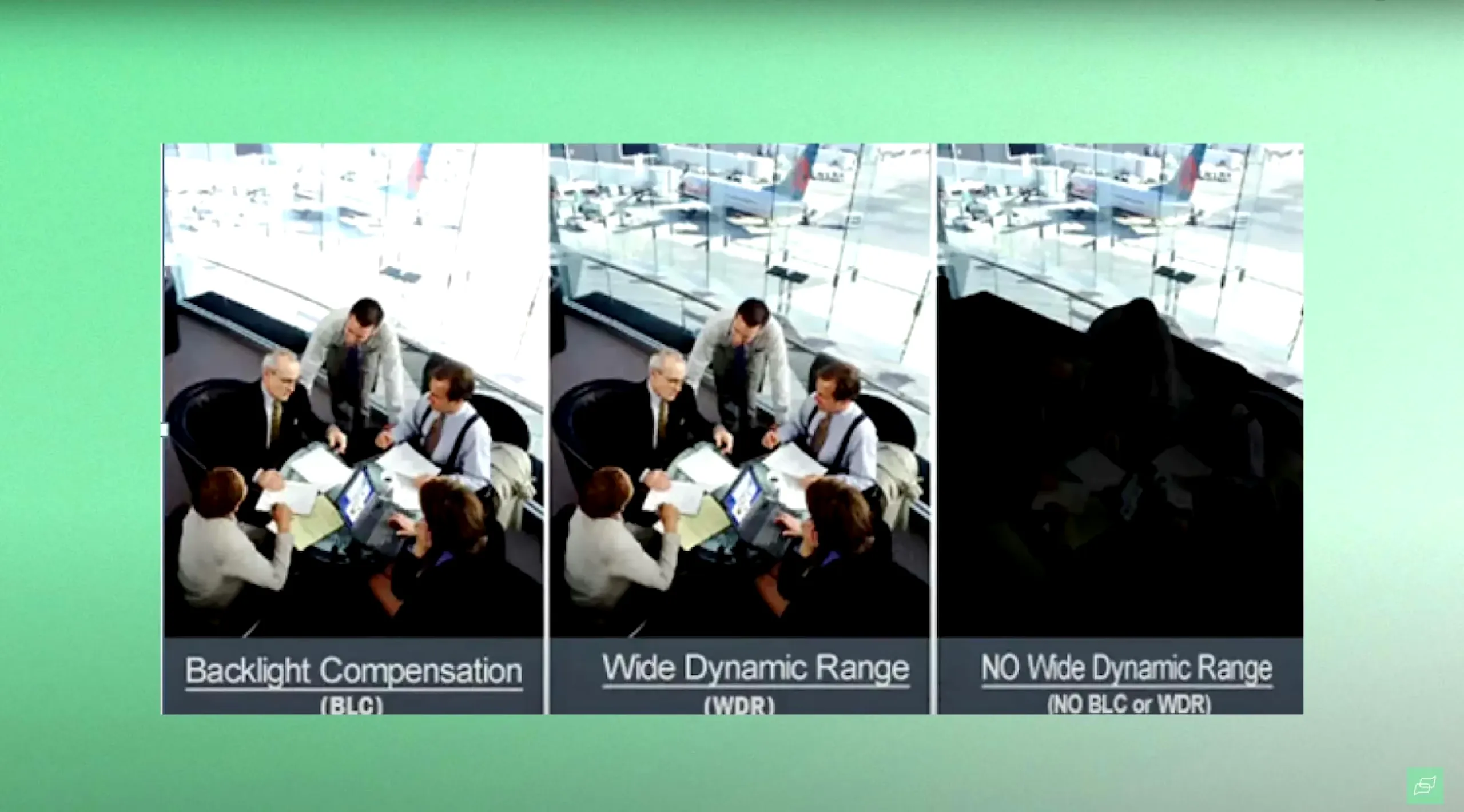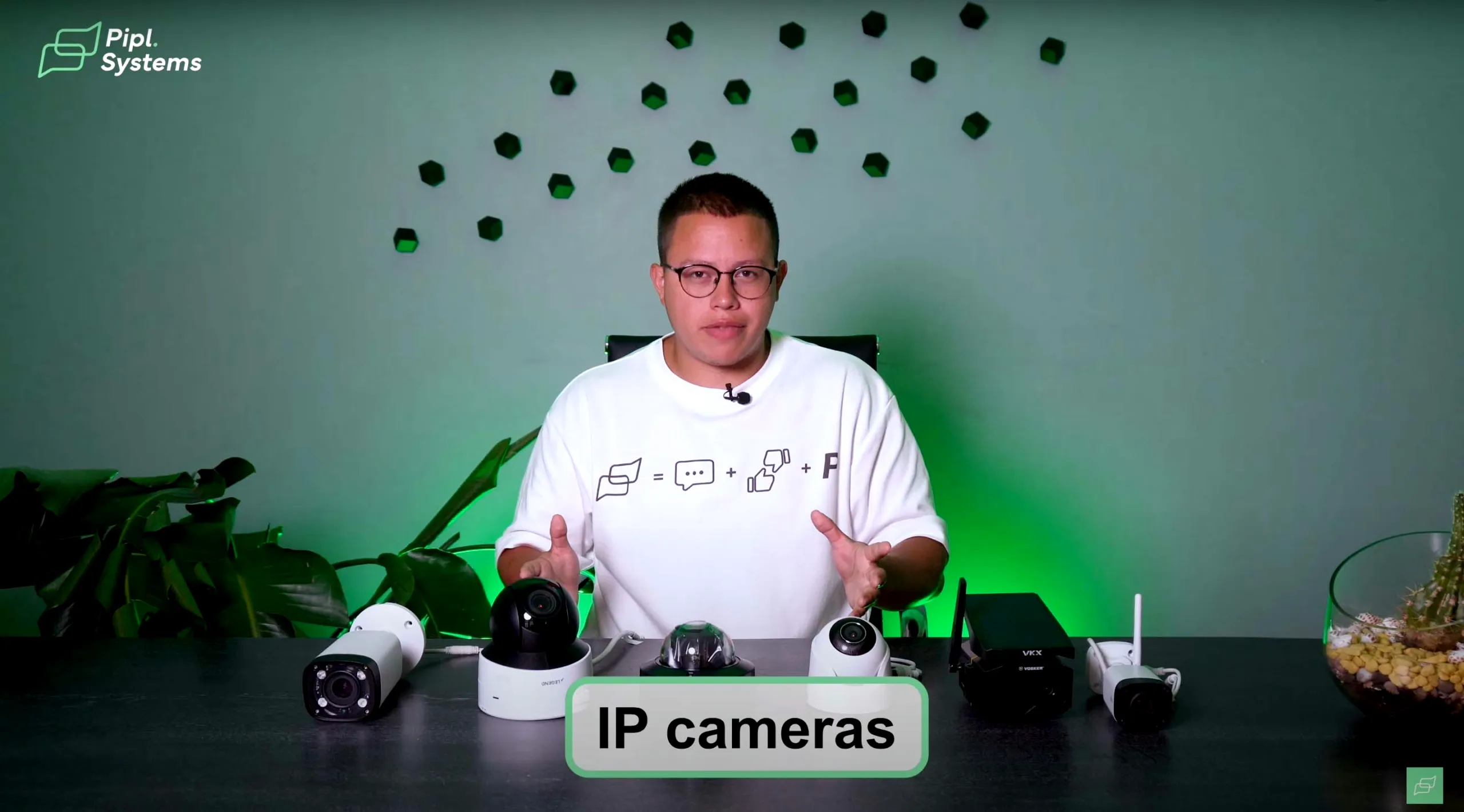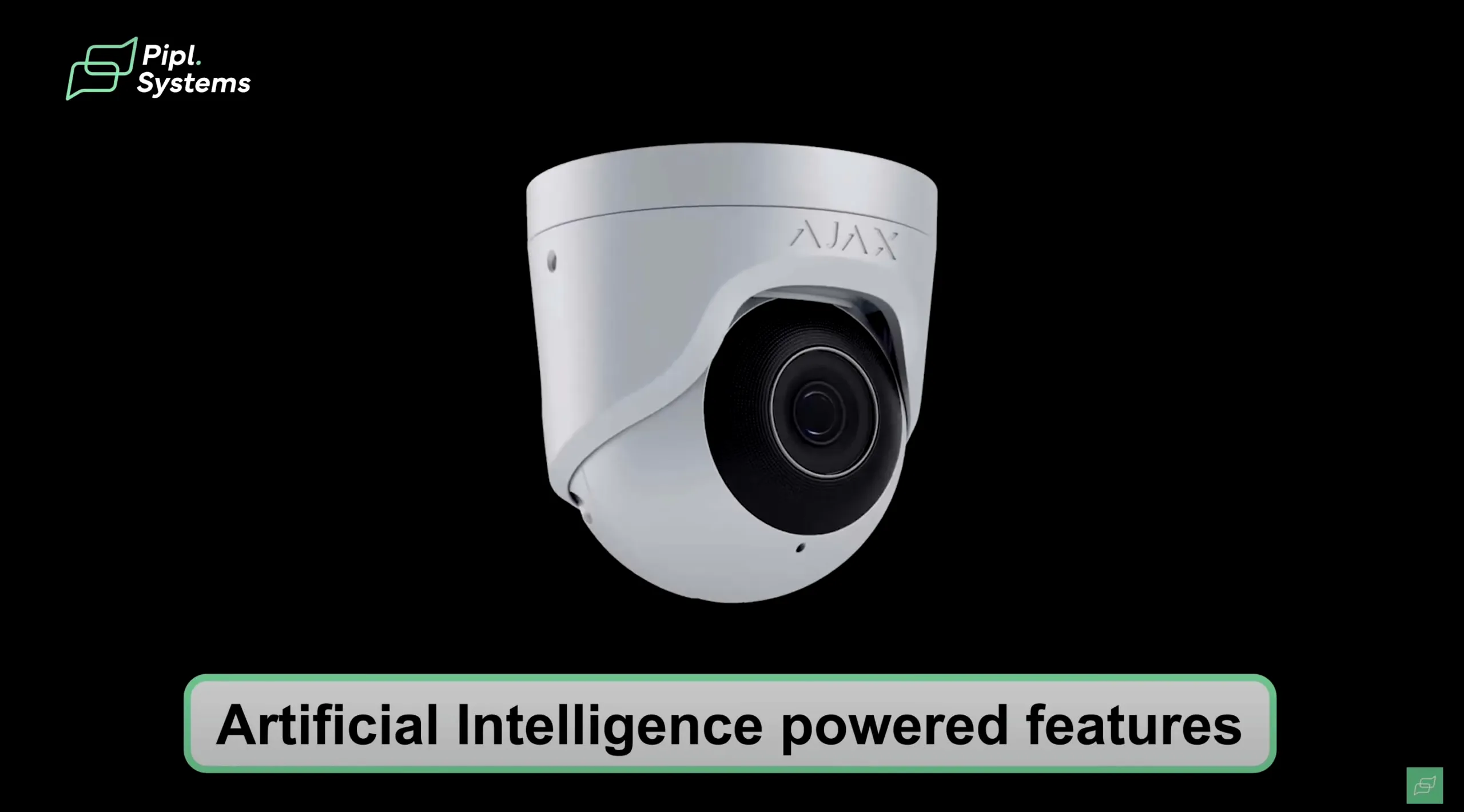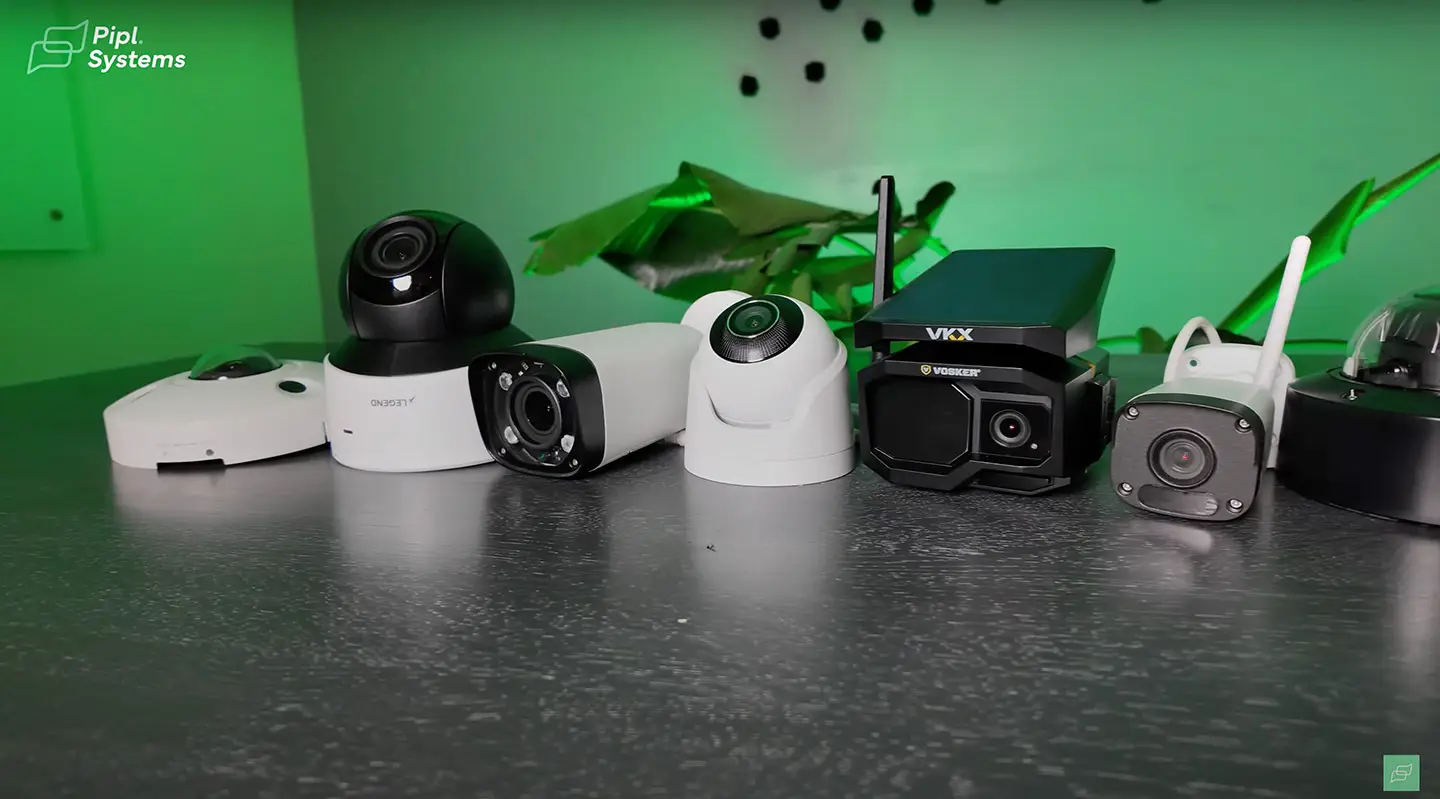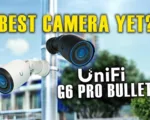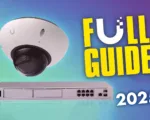Welcome to the Pipl Systems media portal!
Welcome to the Pipl Systems media portal! I’m excited to bring you another in-depth guide tailored specifically for professional installers and integrators in the security industry. My name is Alex, and as an independent security expert, I’m committed to staying at the forefront of the latest developments and technologies that shape our field. This time, we’re diving deep into one of the most critical aspects of securing any facility: choosing the right security camera.
In this guide, we’ll cover everything you need to know to make an informed decision when selecting a CCTV camera in 2024. Whether you’re new to the industry or a seasoned professional, the insights provided here will help you avoid common pitfalls and ensure that your choice aligns perfectly with your security requirements.
When it comes to surveillance, not all cameras are created equal. Resolution, lens type, and viewing angles are just a few of the critical parameters that can significantly impact the effectiveness of your security system. Stick with me as we explore these aspects in detail, providing you with the knowledge needed to secure your facility with confidence.
The Most Common Types of Cameras
Choosing the right security camera begins with understanding the different types available on the market. In this section, we’ll explore the three most common types: Dome, Bullet, and Turret cameras, each serving unique purposes and environments.
Dome Cameras
Dome cameras are perhaps the most recognizable due to their widespread use in commercial settings such as stores, offices, and public buildings. Their design is both functional and discreet, making them ideal for indoor use where you want the camera to blend into the environment. Thanks to their wide-angle lens, they provide comprehensive coverage, making them a popular choice for monitoring large areas.
While traditionally used indoors, modern dome cameras have evolved to be just as effective outdoors. Their weather-resistant design and durable build allow them to withstand various environmental conditions. For installers, this versatility means that dome cameras can be deployed in almost any scenario, providing reliable surveillance without drawing unwanted attention.
Bullet Cameras
Bullet cameras are engineered for long-distance viewing, making them a top choice for monitoring expansive areas such as parking lots, building perimeters, and open spaces. Unlike dome cameras, bullet cameras are typically mounted on walls or ceilings, with their cylindrical shape allowing for straightforward installation.
One of the standout features of bullet cameras is their enhanced protective housing, which often includes waterproofing and dustproofing. This makes them particularly suitable for outdoor use, where they can withstand harsh weather conditions while delivering clear images from considerable distances. For installers focused on perimeter security, bullet cameras are an indispensable tool.
Turret Cameras
Turret cameras offer a unique design with a ball-and-socket joint that allows for easy angle adjustments. This flexibility makes them an excellent choice for areas requiring precise coverage, such as entrances, hallways, and smaller rooms. Turret cameras are also known for their superior low-light performance, thanks to advanced infrared capabilities that provide clear images even in near-total darkness.
For installers and integrators, turret cameras represent a versatile option that combines the best features of both dome and bullet cameras. Their compact size and unobtrusive appearance make them a go-to solution for both indoor and outdoor installations where performance and aesthetics are equally important.
Optic Lenses
The choice of an optic lens is a critical factor that can significantly affect the performance of your security camera. The type of lens you choose will determine the camera’s field of view, the level of detail it can capture, and its overall effectiveness in different environments. Let’s delve into the four primary types of lenses used in CCTV cameras: Fixed, Varifocal, Zoom, and Fisheye lenses.
Fixed Lenses
Fixed lenses have a set focal length, meaning they offer a predetermined field of view that cannot be adjusted. This type of lens is ideal for areas where the surveillance requirements are consistent, such as narrow hallways, small rooms, or entrances. The simplicity of fixed lenses makes them a cost-effective choice for installations where flexibility is not a priority.
For professional installers, fixed lenses are often the go-to option for straightforward surveillance needs. Their reliability and ease of use make them a staple in many security setups, particularly where the camera’s field of view is unlikely to change over time.
Varifocal Lenses
Varifocal lenses provide the flexibility to manually adjust the focal length, allowing for customization of the camera’s field of view. This adjustment typically ranges from 2.8mm to 12mm, enabling installers to fine-tune the coverage area according to the specific needs of the site. Varifocal lenses are particularly useful in larger areas where you may want to cover more ground without adding additional cameras.
For budget-conscious projects, varifocal lenses offer a practical solution by reducing the number of cameras needed to monitor a large area effectively. The ability to adjust the lens also allows for future-proofing installations, as the coverage can be modified without replacing the entire camera.
Zoom Lenses
Zoom lenses take the capabilities of varifocal lenses a step further by allowing remote adjustment of the focal length via a motorized mechanism. This feature is especially useful in scenarios where you need to monitor distant objects with high detail, such as traffic monitoring or large agricultural fields. With focal lengths ranging from 4.3mm to 129mm, zoom lenses offer unparalleled flexibility in capturing detailed images from significant distances.
For professional installers, zoom lenses are invaluable in high-stakes environments where capturing fine details is critical. Whether you’re monitoring a remote area or need to zoom in on specific incidents, these lenses provide the precision required for effective surveillance.
Fisheye Lenses
Fisheye lenses are designed to provide an ultra-wide field of view, often ranging from 180° to 360°. This makes them ideal for monitoring large, open spaces such as shopping malls, public squares, or large indoor areas. However, the wide-angle view comes with some image distortion, particularly at the edges, which can be corrected using specialized software.
For integrators, fisheye lenses offer a unique advantage in environments requiring panoramic coverage. Despite the potential for distortion, the ability to cover a vast area with a single camera makes fisheye lenses a cost-effective and efficient choice for large-scale surveillance.
Resolution
Resolution is another critical aspect of choosing the right CCTV camera, as it directly impacts the clarity and detail of the recorded images. The resolution of a camera is typically measured in megapixels, with higher resolutions providing more detailed images. However, higher resolution also means more data storage is required, which is an important consideration when planning your surveillance system.
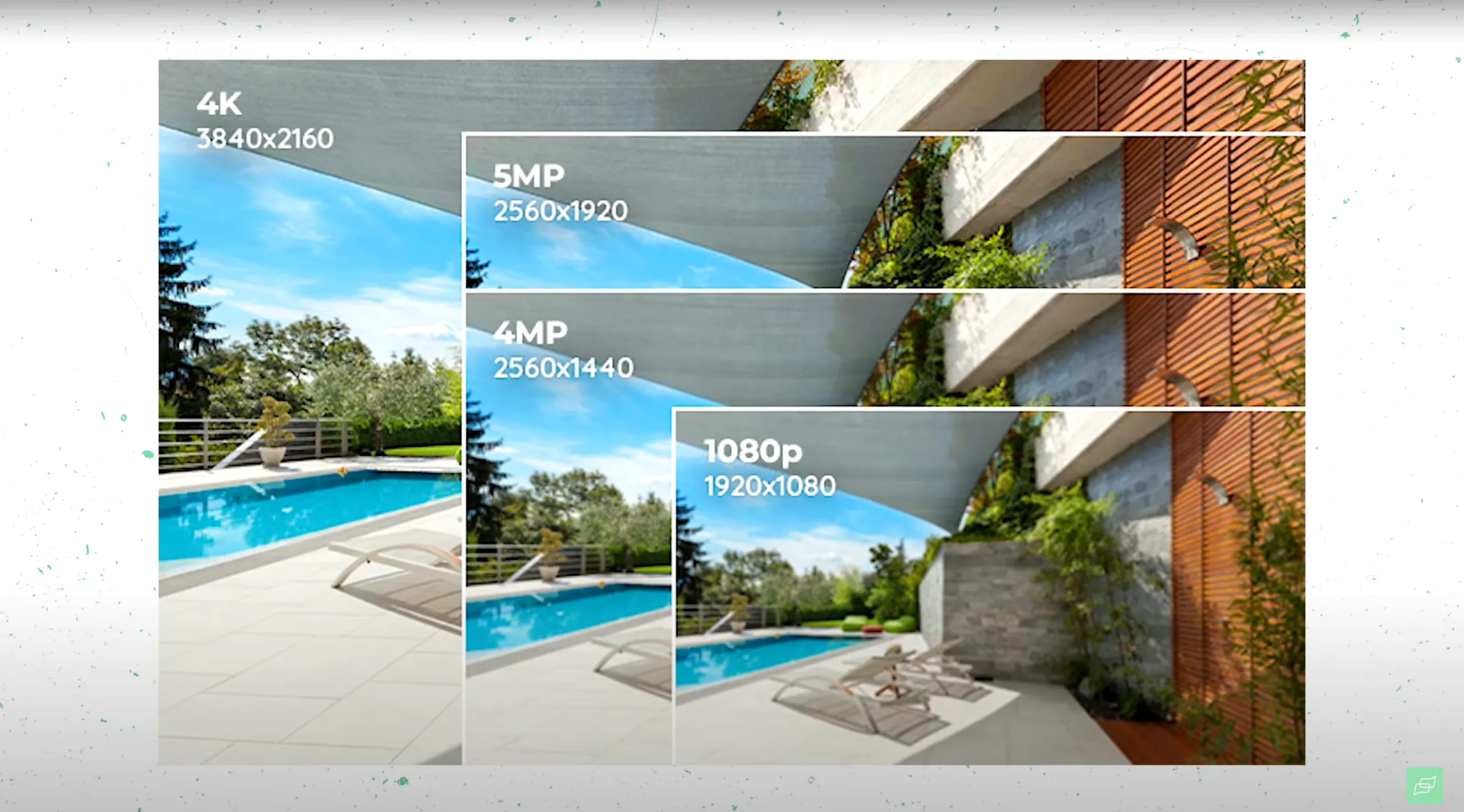
2 Megapixels (Full HD – 1080p)
A 2-megapixel camera offers Full HD resolution, which is generally sufficient for most basic surveillance needs. This resolution provides clear images that can effectively monitor small to medium-sized areas, making it a popular choice for residential and small business installations.
For installers, 2-megapixel cameras are a cost-effective solution that balances image quality with data storage requirements. They are ideal for projects where budget constraints are a factor, but reliable video footage is still necessary.
4 Megapixels
Stepping up to a 4-megapixel camera provides sharper images and improved clarity, making it suitable for environments where greater detail is required. This resolution is particularly useful for monitoring areas where facial recognition or license plate reading might be necessary, as it offers a good balance between image quality and storage needs.
For professional integrators, 4-megapixel cameras represent a versatile option that meets the needs of most commercial and residential installations. They offer enhanced image quality without significantly increasing storage requirements, making them a popular choice for a wide range of applications.
5 Megapixels
A 5-megapixel camera provides even more detail, making it an excellent choice for environments where high-definition footage is crucial. This resolution is often used in scenarios where detailed forensic analysis may be required, such as in high-security areas or critical infrastructure.
For installers working on high-security projects, 5-megapixel cameras offer the resolution needed to capture fine details, such as facial features or small objects, which can be vital in investigations.
8 Megapixels (4K Ultra HD)
For those seeking the highest level of detail, an 8-megapixel camera (4K Ultra HD) delivers exceptional image clarity and definition. This resolution is ideal for covering large areas or capturing intricate details that would be missed by lower-resolution cameras. However, it’s important to note that 4K cameras require significantly more storage, with over 200 GB needed for a single day of continuous recording.
For professional integrators working on large-scale projects or high-end installations, 8-megapixel cameras provide the ultimate in image quality. While the storage requirements are substantial, the level of detail captured makes these cameras ideal for critical surveillance tasks.
Choosing the right security camera for your facility in 2024 involves a careful consideration of several factors, including camera type, lens options, and resolution. Each of these elements plays a crucial role in ensuring that your surveillance system meets the specific needs of the site, whether it’s a small business, a large commercial property, or a high-security environment.
As an independent security expert with years of experience in the industry, I encourage you to take the time to assess your requirements before making a decision. The right camera will not only enhance the security of your facility but also provide peace of mind knowing that you’ve chosen a system capable of delivering reliable, high-quality footage.
Static & PTZ Cameras: A Comparative Insight
When discussing security cameras, two of the most debated types are Static Cameras and Pan-Tilt-Zoom (PTZ) Cameras. Each type has its unique advantages and use cases, making the decision between them an important one.
Static Cameras are ideal for fixed and predictable coverage areas where the monitoring needs are straightforward. These cameras are typically easier to set up, less expensive, and more cost-effective over time. They are perfect for areas where the environment doesn’t require dynamic monitoring adjustments, making them a staple in many security setups.
On the other hand, PTZ Cameras offer an entirely different level of functionality and flexibility. As the name suggests, PTZ cameras allow you to remotely control the camera’s pan, tilt, and zoom functions. This capability is particularly beneficial in environments where monitoring needs can change rapidly, such as large public spaces, parking lots, or events. Some advanced PTZ models even come with automated tracking features, enabling the camera to follow moving objects or detect unusual behaviors autonomously. While these features are incredibly powerful, they also come with a higher price tag and require more sophisticated setup and maintenance.
Choosing between Static and PTZ Cameras boils down to the specific needs of your surveillance area. If your monitoring needs are static and consistent, a static camera might be the best option. However, if you require flexibility, dynamic coverage, or advanced features such as automated tracking, investing in a PTZ camera could be well worth the additional cost and complexity.
The Emergence of Wireless Cameras
In recent years, the security industry has witnessed a significant shift towards Wireless Security Cameras, making surveillance more accessible and flexible than ever before. Wireless cameras, as the name implies, connect to your network via Wi-Fi, eliminating the need for cumbersome Ethernet cables. However, it’s crucial to note that many so-called “wireless” cameras still require a power cable, which somewhat limits their installation flexibility.
Enter the truly wireless, battery-powered cameras—a game-changer in the realm of surveillance. These cameras are completely free from any wiring, making them incredibly easy to install in virtually any location, be it a remote construction site or a secluded cottage. The primary advantage of these cameras lies in their flexibility and ease of installation, as they can be placed virtually anywhere without needing to worry about power sources or network cabling.
Moreover, these cameras often come with dedicated apps that provide a seamless monitoring experience, allowing users to keep an eye on their property from anywhere in the world. Whether you’re looking to secure a remote location or need a quick and flexible surveillance solution, wireless cameras are an excellent choice for modern security needs.
Wide Dynamic Range (WDR): Enhancing Image Quality
A key feature that is often overlooked when selecting a security camera is the Wide Dynamic Range (WDR). This feature is particularly crucial in environments where lighting conditions can be extreme, such as entrances where bright sunlight clashes with darker interiors.
Without WDR, cameras may produce overexposed images in brightly lit areas and underexposed images in darker areas, leading to poor visibility and a loss of critical details. WDR technology works by balancing these extreme light conditions, ensuring that both bright and dark areas of the image are visible and clear. This feature is especially important in scenarios where facial recognition or identifying details in varying lighting conditions is crucial.
Whether you’re dealing with a dimly lit room, an area exposed to direct sunlight, or a combination of both, investing in a camera with WDR capability can significantly enhance the clarity and detail of your surveillance footage, ensuring that you capture every important moment with precision.
The right security camera involves more than just picking the first one that fits your budget. It’s about understanding your specific surveillance needs and selecting a camera that offers the right balance of functionality, flexibility, and image quality. Whether you’re considering the static reliability of fixed cameras, the dynamic flexibility of PTZ cameras, the installation ease of wireless models, or the image-enhancing power of WDR, each choice plays a crucial role in building an effective security system.
IP Cameras vs. Analog Cameras: Which is Right for You?
In the world of surveillance, the choice between IP cameras and analog cameras is often dictated by the specific needs and budget of the project.
IP Cameras are the go-to option when high-resolution video, remote monitoring, and flexibility are paramount. These cameras connect via network cables, offering advantages such as higher resolution, higher frame rates, and digital zoom capabilities. IP cameras excel in scenarios where image clarity and the ability to adjust or monitor from a distance are critical. However, these features come at a higher cost, making IP security cameras less budget-friendly compared to their analog counterparts.
On the other side of the spectrum, Analog Cameras—which record in formats like AHD, HD-TVI, or HD-CVI—are a more budget-conscious option. While they may not match the image clarity of IP cameras, analog cameras still provide reliable surveillance with acceptable resolution for most standard installations. They are particularly suitable for smaller projects where budget constraints are a significant factor, and the highest resolution isn’t a necessity.
Key Takeaway: If your security needs demand high clarity, remote monitoring, and flexibility, IP cameras are worth the investment. However, for smaller, budget-conscious installations, analog security cameras can deliver reliable performance without breaking the bank.
The Future of Surveillance: AI-Powered Cameras
As we look ahead, the integration of Artificial Intelligence (AI) into security cameras is undeniably the future of surveillance technology. AI-powered cameras offer features that were once considered science fiction, such as facial recognition, package detection, person and vehicle detection, and even pet detection.
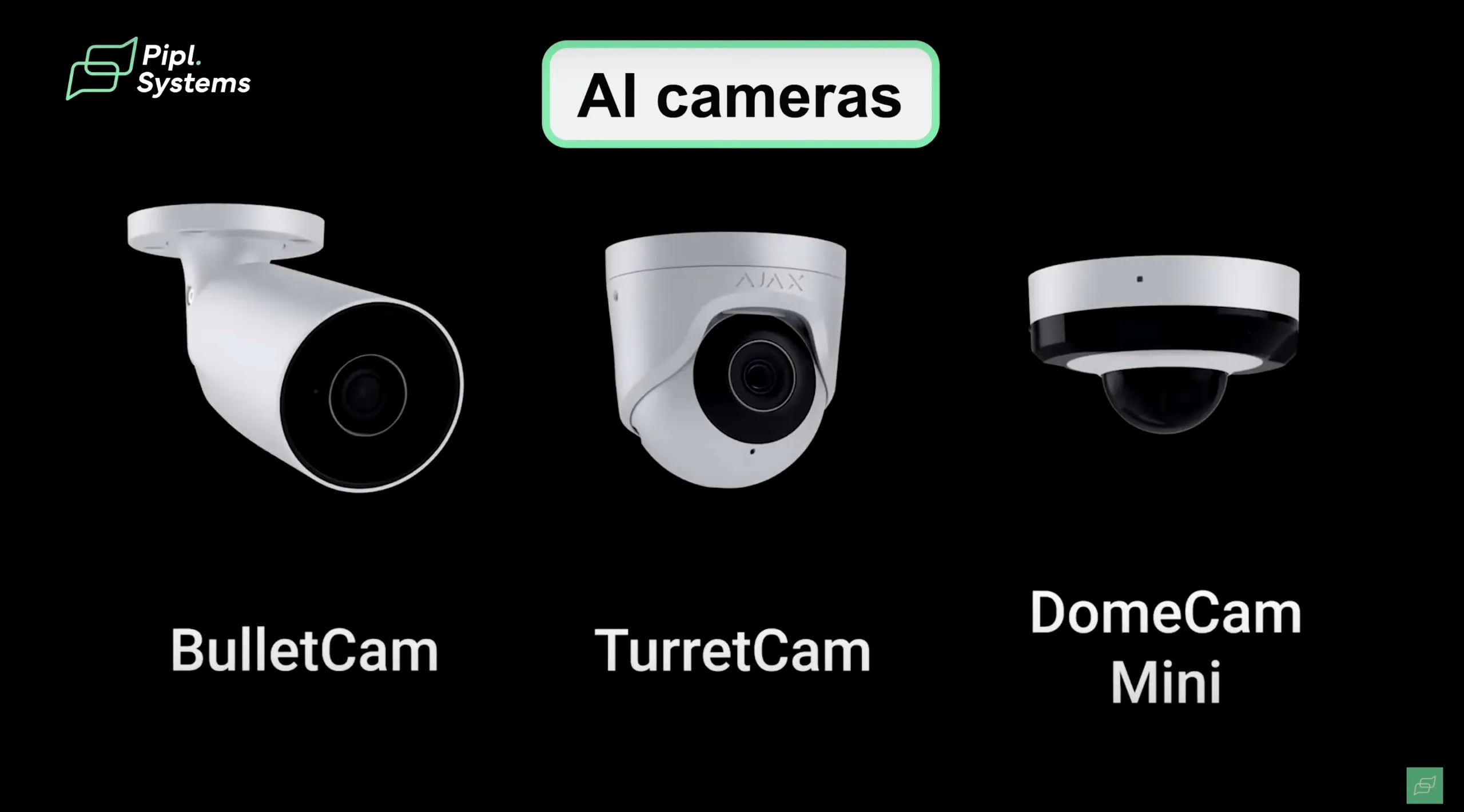
Brands like Ajax are at the forefront of this revolution, incorporating AI into their security ecosystems. For instance, Ajax cameras can differentiate between various objects—people, pets, vehicles—and trigger recordings or alerts based on specific criteria. This selective recording capability is not only efficient in capturing relevant events but also reduces storage requirements by filtering out unnecessary footage.
Moreover, AI security cameras like those from Ajax handle processing on the camera itself, which minimizes the load on your network infrastructure and enhances the efficiency of your security system. With AI-powered surveillance, the days of endlessly sifting through hours of footage are over, as the system intelligently highlights the most critical moments for review.
Key Takeaway: AI-powered cameras represent the next leap in security technology, offering advanced features that enhance both the effectiveness and efficiency of surveillance systems. As AI continues to evolve, these security cameras will become an integral part of any comprehensive security setup.
Storage Solutions: Where Does All the Data Go?
Choosing the right storage solution for your security footage is just as crucial as selecting the camera itself. Depending on your setup, you have three main options: Memory Cards, NVR (Network Video Recorder), and Cloud Storage.
- Memory Cards are ideal for standalone cameras, especially in remote or temporary locations where internet access might be limited. These cards provide a simple, easy-to-install storage solution but come with limited capacity, meaning you’ll need to manually manage and replace them as they fill up.
- NVRs (Network Video Recorders) offer a centralized storage solution for multiple cameras, making them a popular choice for larger installations. NVRs support continuous recording, scheduled backups, and higher storage capacity, all of which contribute to a more robust and scalable surveillance system. However, they do require a reliable internet connection and a more complex setup, which can add to the initial investment.
- Cloud Storage provides off-site storage that can be accessed remotely, ensuring that your footage is safe even if something happens to your physical equipment. Cloud services often include automated backups, reducing the manual labor associated with storage management. However, these services usually come with subscription fees, so it’s important to factor in the ongoing costs.
Key Takeaway: The choice of storage solution depends on your specific needs. For small, remote setups, memory cards are sufficient, while larger installations may benefit from the centralized capabilities of an NVR. If remote access and security are paramount, cloud storage offers an efficient, albeit costlier, solution.
Conclusion
In the rapidly evolving landscape of security technology, making informed decisions about the right security camera system for your needs is more crucial than ever. Throughout this multi-part guide, we’ve explored the essential factors that professional installers, integrators, and even informed consumers must consider when selecting the best security cameras in 2024. From understanding the differences between static and PTZ cameras to evaluating the merits of wireless versus wired systems, and diving deep into the advantages of IP cameras over analog systems, we’ve covered a wide array of topics to equip you with the knowledge needed to make the best choices for your security setup.
One of the key takeaways from this discussion is the importance of matching your camera system to the specific requirements of your environment. For instance, static cameras offer reliability and cost-effectiveness for situations where fixed coverage is sufficient, while PTZ cameras provide the flexibility needed for dynamic environments where monitoring needs can change rapidly. Understanding these distinctions can save you both time and money by ensuring that you select the most appropriate equipment for your needs.
The rise of wireless cameras has also opened up new possibilities for installations in challenging locations, such as remote areas or sites without access to wired infrastructure. The convenience and flexibility offered by wireless security cameras—especially fully battery-powered models—cannot be overstated, particularly for temporary setups or areas where traditional power sources are not available.
Furthermore, as we discussed in the final part of this guide, the future of security lies in the integration of artificial intelligence. AI-powered cameras are transforming the industry by offering advanced features like facial recognition, object detection, and smart notifications, which significantly enhance the efficiency and effectiveness of surveillance systems. These technologies are not just buzzwords; they represent real, tangible improvements in how security systems operate, making them more intelligent, responsive, and capable of distinguishing between important events and irrelevant data.
However, as you consider these cutting-edge features, it’s equally important to think about how your footage will be stored. Storage solutions—whether local, centralized via NVRs, or cloud-based—each have their own pros and cons. Your choice will depend on factors like the size of your installation, your budget, and your need for remote access. Memory cards offer simplicity and ease of use for smaller setups, while NVRs provide robust, centralized storage for larger systems. Cloud storage, with its off-site benefits and accessibility, is ideal for those who prioritize security and convenience, though it does come with ongoing subscription costs.
In conclusion, the process of choosing the best security camera system in 2024 involves a careful balance between your specific needs, the environment you’re securing, and the technological options available. Whether you are a professional installer, an integrator, or a tech-savvy homeowner, understanding the nuances of each type of camera, the capabilities they offer, and the best ways to store and manage your footage will enable you to make informed decisions that enhance the safety and security of your environment.
As the security industry continues to evolve, staying informed about the latest developments is key to maintaining an effective surveillance system. We invite you to subscribe to the Pipl Systems email newsletter to keep up with all the latest trends, product launches, and expert insights. By staying connected, you’ll be well-equipped to navigate the ever-changing world of security technology, ensuring that your systems remain cutting-edge and reliable.
